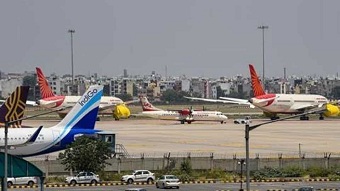The Airports Authority of India (AAI) plans to equip 24 more airports by the end of this year with the global navigation satellite system (GNSS), whose approach procedures enable flights to land at airports despite poor visibility due to heavy rain or fog. Over the last eight months, 21 Indian airports have been equipped with GNSS, aviation officials said.
Installing GNSS is part of a global plan by the International Civil Aviation Organisation (ICAO) to make landings more efficient during adverse weather. India started implementing the plan two years ago, aviation officials said.
The approach procedure, known as Required Navigation Performance (RNP), will help Indian airports without an Instrument Landing System (ILS, a system that allows pilots to land at an airport when there is low visibility) and those where ILS is dysfunctional because of weather conditions like floods.
In Maharashtra, Mumbai, Shirdi, Aurangabad and Kolhapur airports are equipped with this technology. Other Indian airports include Kozhikode, Jabalpur, Indore, Begumpet (Hyderabad), Kolkata, Hubli, Jaipur, Khajuraho, Kannur, Belgaum and Varanasi. A former official of the Directorate General of Civil Aviation said, “It is good to see India taking steps to harness GNSS technology for designing these RNP approaches that make runways accessible in a safe and efficient manner. This is the future of aviation, as most of the expensive ground-based technology will be replaced by cost-effective space-based technology.”
RNP procedures are expected to not only reduce delay in arrivals due to poor weather conditions but also increase the accessibility of airports as fewer flights are expected to be diverted. A senior AAI official said, “For safe landings, aircraft traditionally use ground-based technology like ILS or other navigational aids like VOR (Very High Frequency Omnidirectional Range). However, to install and maintain such equipment at every airport is a costly affair and may not be feasible.”
A Delhi-based AAI official said, “With the recent advancement in technology like aircraft electronics systems (avionics) as well as GNSS, aircraft can navigate using satellites. It is now possible to design an aircraft approach (towards landing) procedure based on this GNSS, which allows the aircraft to operate even in moderately low visibility conditions (as low as 1,500-2,000m) which is not possible with both VOR and during visible approach.”








